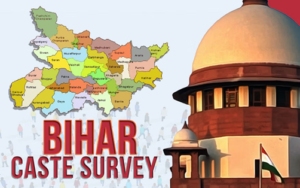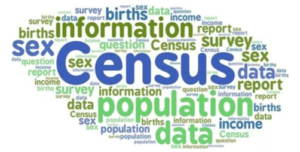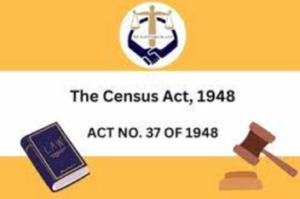Centre Asserts Exclusive Authority to Conduct Census under Census Act, 1948
Relevance
- GS Paper 1 and 2
- Population and Associated Issues
- Government Policies & Interventions
- Tags: #census #population #SC #currentaffairs #upsc
Why in the News?
The Centre on Monday told the Supreme Court that the Census Act, 1948, empowers “only the Central Government” to conduct a Census.
Background and Legal Position
- In a recent development, the Central Government has informed the Supreme Court that the authority to conduct a Census lies solely with the Central Government, as established by the Census Act, 1948.
- The government filed a concise affidavit as part of the ongoing Bihar caste survey case. According to the affidavit, the Census process is regulated by the Census Act, 1948, and is governed by the provisions of the Constitution.
Exclusive Authority of Central Government
- The affidavit clarifies that the Census Act, 1948, empowers only the Central Government to conduct the Census.
- The subject of Census falls under the Union List under Entry 69 in the Seventh Schedule of the Constitution.
- Based on the powers granted by this entry, the Central Government enacted the Census Act. Consequently, the authority to conduct Census activities is vested solely in the Central Government, as stated in section 3 of the Act.
Clarification on Revised Affidavit
- Earlier, the Centre submitted an affidavit that explicitly stated that no other entity, whether under the Constitution or otherwise, possesses the right to conduct Census-related exercises.
- However, this paragraph was subsequently acknowledged as having been included inadvertently and was consequently withdrawn in a revised affidavit.
Supreme Court’s Ongoing Consideration
- The Supreme Court is currently deliberating on petitions challenging the Patna High Court’s decision to allow the caste survey in Bihar.
- The petitioners argue that the survey violates a nine-judge Supreme Court decision pertaining to privacy rights.
- The argument centers on the principle that any encroachment on fundamental rights must be supported by statutory law rather than executive orders.
Prima Facie Consideration
- Despite the ongoing deliberations, the Supreme Court has indicated that it will not grant a stay on the High Court order unless the appellants can establish a prima facie case.
- The petitioners are asserting that the caste survey conducted in Bihar was not based on proper statutory backing, and therefore, is in contravention of established legal principles.
Government’s Commitment
- The government emphasizes its commitment to advancing the welfare of Scheduled Castes, Scheduled Tribes, Socially and Educationally Backward Classes, and Other Backward Classes in line with the provisions of the Constitution and applicable laws.
The ongoing case poses important questions about the legal basis and authority behind Census activities and its implications for privacy and constitutional rights. The verdict of the Supreme Court is eagerly awaited to provide clarity on these issues.
| Census in India
Definition of Population Census: – Population Census involves collecting, analyzing, and disseminating demographic, economic, and social data about all individuals in a country or a specific area at a particular time. – It offers insights into population trends and characteristics. Nodal Ministry: – The Office of the Registrar General and Census Commissioner, Ministry of Home Affairs, conducts the decennial Census. – Previously, the Census Organization was set up temporarily for each Census until 1951. Legal/Constitutional Backing: – The Census is carried out under the Census Act, 1948. – The Act was introduced by Sardar Vallabhbhai Patel, the former Home Minister of India. – The Constitution places the population census as a Union subject under Article 246, listed as item 69 in the seventh schedule. Confidentiality of Information: – Census data is highly confidential and not accessible to courts. – Confidentiality is guaranteed by the Census Act, 1948. – Penalties are defined for non-compliance or violation of Act’s provisions for both the public and census officials. Significance of Census – Information Source: The Indian Census offers diverse statistical information about the nation’s people, making it the largest single data source. – Research and Projections: Researchers and demographers use census data for population analysis, trends, and projections. – Good Governance: Census data shapes administration, planning, policy-making, and program management and evaluation by the Government. – Constituency Demarcation: Census data guides the demarcation of constituencies and allocation of representation in Parliament, State assemblies, and local bodies. – Business Insights: Businesses use census data to enhance their operations and planning for areas with limited data. – Grants Distribution: The Finance Commission allocates grants to states based on Census data’s population figures. Socio-Economic and Caste Census (SECC): Overview and Significance Introduction The Socio-Economic and Caste Census (SECC) was conducted in 2011, marking its first occurrence since 1931. Its primary aim is to survey every Indian family, both in rural and urban areas, to gather crucial information. Objectives 1. Economic Status: SECC gathers data on economic conditions, aiding authorities to define indicators of deprivation. These indicators help in identifying individuals who require support. 2. Caste Identification: It collects specific caste information, enabling the government to reassess the economic status of different caste groups. Key Differences from Census – Field of Coverage: Census provides a demographic snapshot of India, while SECC is a tool to identify beneficiaries of state assistance. – Data Confidentiality: Census data is confidential, whereas SECC data is utilized by government departments to allocate benefits. Importance of SECC 1. Inequality Mapping: SECC aids in mapping inequalities on a broader scale. 2. Supporting Welfare Schemes: It provides statistical justification for caste-based affirmative actions and welfare programs. 3. Legal Requirement: The Constitution mandates a caste census. Article 340 calls for a commission to assess socially and educationally backward classes and recommend government action. Challenges Associated 1. Caste Census Ramifications: Caste carries emotional weight, leading to potential political and social consequences. 2. Identity Consolidation: There’s concern that caste enumeration could solidify identities. 3. Data Release Hurdles: Due to these concerns, a significant portion of SECC data remains unreleased or only partially disclosed. Contextual Nature of Caste – Caste in India isn’t merely a stand-in for class or deprivation. It embodies distinct, embedded discrimination that often surpasses class divisions. |
| The Census Act, 1948 – Simplified
1. Short Title and Extent – The act is known as the Census Act, 1948. – It applies throughout India. 2. Definitions – “Premises” includes land, buildings, structures, etc. – “Prescribed” means defined by rules. – “Vehicle” means any transport for road use. 3. Central Government to Take Census – The Central Government can declare the intention to conduct a census by notification in the Official Gazette. – Once declared, the census must be conducted. 4. Appointment of Census Staff – Central Government can appoint a Census Commissioner and Directors of Census Operations. – State Government can appoint census officers. – Written authority proves appointment. – State Government can delegate appointment power. 5. Status of Census Authorities – Census Commissioner, Directors of Census Operations, and census officers are public servants under the Indian Penal Code. 6. Discharge of Duties of Census Officers – District Magistrate or appointed authority can direct certain officers to help with the census. – These officers must perform duties as specified. 7. Power to Call for Assistance – District Magistrate or appointed authority can order landowners, officials, and officers of local authorities to assist with the census. – They must follow orders and are considered public servants. 7A. Requisitioning Premises, Vehicles, etc. – Central Government can requisition premises or vehicles needed for the census. – Orders for requisition must be addressed to the owner or person in possession. – Requisitioned property can’t be held beyond the need for the census. 7B. Payment of Compensation – When premises are requisitioned, compensation will be given to the affected person based on specified factors. This act outlines the procedures, authorities, and regulations related to conducting a census in India. |
Sources:
https://thelawcommunicants.com/the-census-act-1948/
https://indiankanoon.org/doc/774283/
Mains Questions
Discuss the key provisions and significance of the Census Act, 1948 in the context of India’s governance structure. Analyze whether the authority to conduct a population census falls under the purview of the central or state governments, considering the constitutional framework. 250words.






